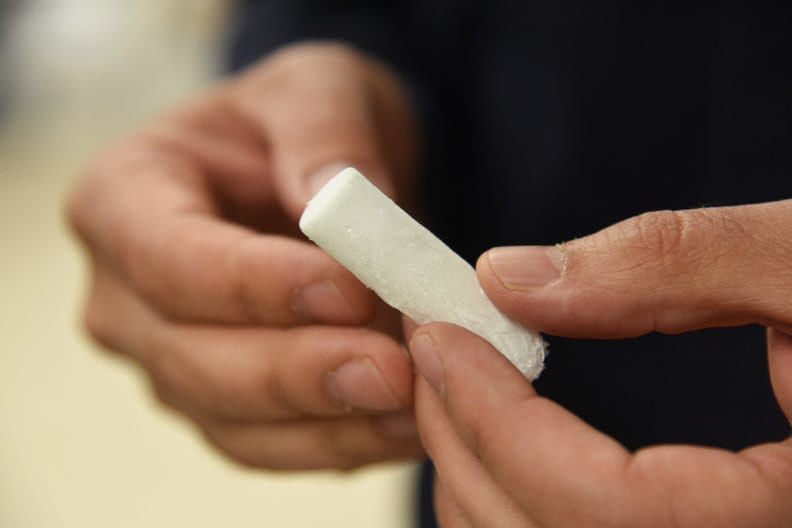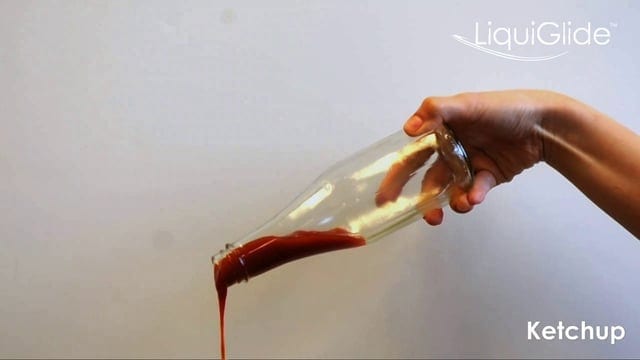
Washington State University researchers have developed an environmentally-friendly, plant-based material that for the first time works better than Styrofoam for insulation.
The foam is mostly made from nanocrystals of cellulose, the most abundant plant material on earth. The researchers also developed an environmentally friendly and simple manufacturing process to make the foam, using water as a solvent instead of other harmful solvents.
The work, led by Amir Ameli, assistant professor in the School of Mechanical and Materials Engineering, and Xiao Zhang, associate professor in the Gene and Linda School of Chemical Engineering and Bioengineering, is published in the journal Carbohydrate Polymers.
Researchers have been working to develop an environmentally friendly replacement for polystyrene foam, or Styrofoam. The popular material, made from petroleum, is used in everything from coffee cups to materials for building and construction, transportation, and packaging industries. But, it is made from toxic ingredients, depends on petroleum, doesn’t degrade naturally, and creates pollution when it burns.
While other researchers have created other cellulose-based foams, the plant-based versions haven’t performed as well as Styrofoam. They are not as strong, don’t insulate as well, and degraded at higher temperatures and in humidity. To make cellulose nanocrystals, researchers use acid hydrolysis, in which acid is used to cleave chemical bonds.
In their work, the WSU team created a material that is made of about 75 percent cellulose nanocrystals from wood pulp. They added polyvinyl alcohol, another polymer that bonds with the nanocellulose crystals and makes the resultant foams more elastic. The material that they created contains a uniform cellular structure that means it is a good insulator. For the first time, the researchers report, the plant-based material surpassed the insulation capabilities of Styrofoam. It is also very lightweight and can support up to 200 times its weight without changing shape. It degrades well, and burning it doesn’t produce polluting ash.
“We have used an easy method to make high-performance, composite foams based on nanocrystalline cellulose with an excellent combination of thermal insulation capability and mechanical properties,” Ameli said. “Our results demonstrate the potential of renewable materials, such as nanocellulose, for high?performance thermal insulation materials that can contribute to energy savings, less usage of petroleum-based materials, and reduction of adverse environmental impacts.”
“This is a fundamental demonstration of the potential of nanocrystalline cellulose as an important industrial material,” Zhang said. “This promising material has many desirable properties, and to be able to transfer these properties to a bulk scale for the first time through this engineered approach is very exciting.”
The researchers are now developing formulations for stronger and more durable materials for practical applications. They are interested in incorporating low?cost feedstocks to make a commercially viable product and considering how to move from laboratory to a real-world manufacturing scale.
Learn more: Researchers develop viable, environmentally-friendly alternative to Styrofoam
The Latest on: Nanocrystalline cellulose
[google_news title=”” keyword=”nanocrystalline cellulose” num_posts=”10″ blurb_length=”0″ show_thumb=”left”]
via Google News
The Latest on: Nanocrystalline cellulose
- Global Nanocellulose Industry Report 2024 - Auto Industry Focus on Reducing Vehicular Weight Shifts Focus onto Nanocelluloseon April 22, 2024 at 12:53 am
Growth in the Nanocrystalline Cellulose segment is estimated at 17.9% CAGR for the next 8-year period. The Nanocellulose market in the U.S. is estimated at US$223.7 Million in the year 2023. China, ...
- 3D Printing Real Wood With Just Cellulose And Ligninon March 26, 2024 at 9:40 pm
Although the components of wood – cellulose and lignin – are exceedingly cheap and plentiful, combining these into a wood-like structure is not straightforward, despite many attempts to make ...
- Nanotechnology Companies in Canadaon January 13, 2024 at 9:10 am
CelluForce is a joint venture of Domtar Corporation and FPInnovations created to manufacture nanocrystalline cellulose in the world's first plant of its kind, located in Windsor, Quebec. Backed by a ...
- Bacterial cellulose comes out of the woodworkon April 26, 2023 at 6:03 am
But plant-based ‘bioplastics’ are not new. The first man-made plastic was made in 1862 using cellulose, the main component of plant cell walls, pre-dating the petroleum-based plastics that ...
- Structural Nanocrystalline Materialson March 26, 2022 at 7:14 am
Ovid’ko, I. A. Skiba, N. V. and Sheinerman, A. G. 2008. Influence of grain boundary sliding on fracture toughness of nanocrystalline ceramics. Physics of the Solid ...
- Natural nanofibres make a useful template for highly active catalystson October 29, 2021 at 3:02 am
Using the natural polymer cellulose as a template, researchers in Russia have been able to produce fibrous nanostructures of ceria (cerium oxide) that show strong activity in a range of light ...
- Cellulose Chemistryon February 25, 2021 at 4:06 am
The Cellulose Chemistry research group, lead by Dr. Alistair King, concerns the development of techniques for tuning the reactivity of bulk cellulose and at the surface, with applications in textiles, ...
- Bacterial Cellulose Scaffolds and Cellulose Nanowhiskers for Tissue Engineeringon August 17, 2020 at 11:55 am
No writing assistance was utilized in the production of this manuscript. Cellulose is the principle structural polysaccharide in plants, but is also produced by certain strains of bacteria such as ...
- Nanotechnology Products, Applications & Instrumentson September 10, 2017 at 2:21 pm
The company develops nano-crystalline cellulose based products. The company is commercializing the use of nanoparticles in components and products made from composite materials. SP Nano's patented ...
- Cellulose Insulation Installationon June 18, 2013 at 1:59 pm
Contractor Rick Davenport demonstrates the installation of wet-spray cellulose insulation. Jets of water moisten the insulation as it leaves the blower hose nozzle, then the damp cellulose sticks ...
via Bing News










